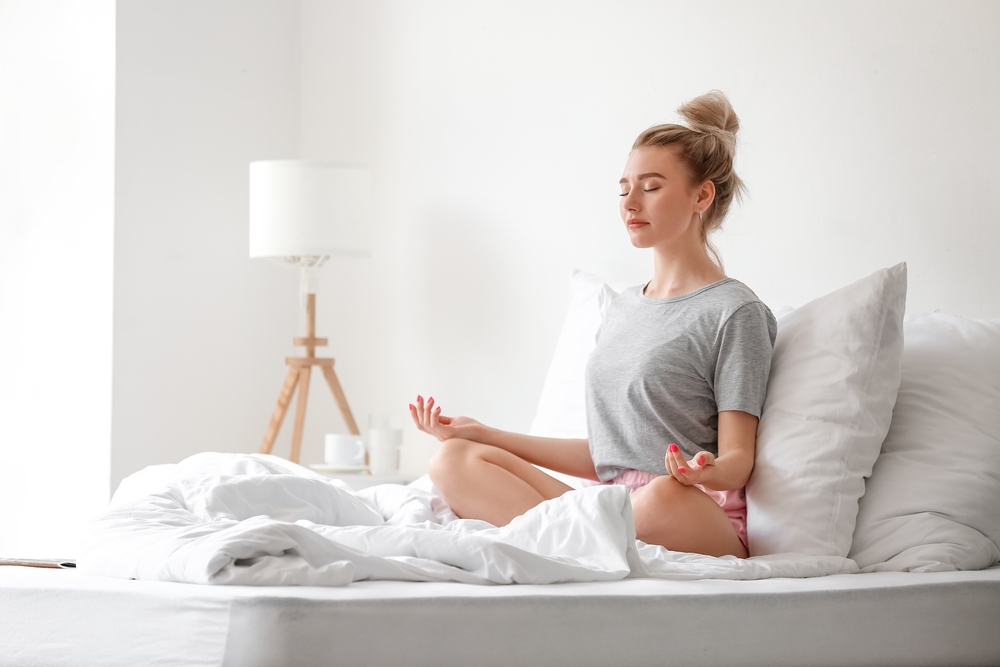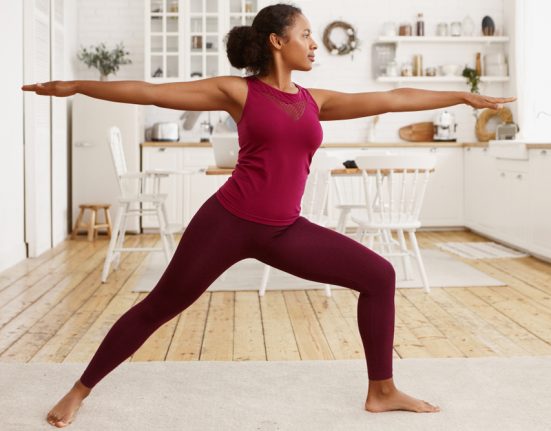Trouble sleeping? Sleep meditations can help—here are five to try.
Guided sleep meditation is a method for helping you to let go of worrying thoughts and relax your body before bed. Like other forms of meditation, this practice involves moving your focus away from your thoughts to sensations in your body.
In simple terms, guided sleep meditation involves meditating before sleep, typically while you are laying in bed. While you can practice sleep meditation on your own, guided practice usually means that you listen to an audio recording that directs you through the steps of the guided sleep meditation.
The goal of guided sleep meditation is to reduce the impact of worrying thoughts and tension in your body on your sleep. By learning how to shift your focus and relax your body, you will start to notice improvements in your ability to fall and stay asleep.
Regular practice of guided sleep meditation has been shown to improve sleep, meaning that this method is an important strategy that you can use to help reduce problems falling and staying asleep.
What the Research Says
According to the American Sleep Association, around 30% of adults have short-term problems with insomnia, and about 10 percent have chronic difficulties with falling and/or staying asleep.1 What’s more, around a third of adults report typically getting less than seven hours of sleep per night.
Given that adults need seven to nine hours of sleep to function best, and teenagers need even more (eight to 10 hours), it’s not surprising that methods for improving sleep are becoming more well-known.
In a 2015 study published in JAMA, it was shown that mindfulness meditation was more effective for improving sleep than a sleep hygiene intervention with 49 older adults. The mindful awareness practice (MAP) intervention that was used took place over six weeks for two hours each week.
It was also found that the effects on sleep carried over into daytime issues, with fatigue and depression being reduced. While this is a small initial study, it suggests that guided sleep meditation may be more effective than sleep hygiene practices alone (e.g., going to bed at a certain time each night, not using electronics before bed).
Benefits of Meditation for Sleep
Meditation helps you to rest in the present moment. When you lay your head on the pillow at night, it’s likely that you begin to focus on the thoughts you were suppressed during the day. Without any outside distractions, it can be hard to control runaway thoughts that may lead to anxiety and depression.
Guided sleep meditation allows you to let go of the thoughts that are swirling and to rest your mind. In turn, this activates your parasympathetic nervous system, which helps to lower your heart rate and slow down your breathing rate. All of these changes prepare you for sleep—you may even find yourself drifting off to sleep in the middle of the meditation practice.
It’s important to note that guided sleep meditation is not about forcing yourself to sleep. Sleep should be a side benefit of the practice, which is aimed at relaxing your body and slowing your mind.
You should also notice daytime benefits of doing guided sleep practice, since getting enough sleep at night is related to how you feel during the day.
The best guided sleep meditations will involve you following along with an audio guide that you can play on headphones or on a small speaker beside your bed. The goal is to not have to think too much about what you are doing—rather, you let yourself be guided by the voice on the recording.
Over time, you should find it easier to jump into the meditation and follow the prompts. So, don’t give up too early if you find at first that you can’t calm down or relax when doing the meditation.
How to Practice Guided Meditation for Sleep
Sleep meditations can come in many different types, depending on how you’d like to unwind your day. Below are some techniques that can be included in common sleep meditations. Here are five sleep meditations to try and tips on how to get the most of out of them.
Body Scan
A typical guided sleep meditation will have you redirecting your attention away from your worried thoughts toward your body through what is called a “body scan.” This process involves directing your attention away from the thoughts to noticing the sensations in your body, without trying to change them.
During the meditation, you will move through the various parts of your body from your head down to your toes, noticing different sensations such as heaviness, tension, tingling, temperature, and tightness. As you move through each body part, you will be instructed to gently relax and release tension by breathing into that part.
Breathing Exercises
In addition to the body scan, guided sleep meditation can involve breathing exercises.
For example, you might be asked to count as you breathe in and out, which allows your body to slow down and sends the signal that it is time to sleep.
Visualization
Through visualization, you would imagine a peaceful scene, which would help you enter a trance-like state similar to what is induced in the process of hypnosis.
You will also be directed to let your worrying thoughts (or any thoughts that you have) move past you as though they are clouds floating in the sky or leaves floating down a river. As you do this, your body will start to soften and relax, and you will breathe more deeply.
Gratitude
A sleep meditation focused on gratitude would have you practice a focus on being grateful and showing loving kindness and patience to yourself. A gratitude meditation is a great way to reflect back on the events of your day and be mindful of the things that transpired in your favor as well as the lessons you’ve learned from your challenges.
Grounding
Like most meditations, a grounding meditation will focus on your ability to return to the present moment through sustained attention.
The above meditation incorporates poetry, allowing us to cultivate mindfulness by simply being aware of the recited words and using them as prompts to direct our thoughts.
Tips to Improve Sleep Hygiene
Below are some simple sleep hygiene practices that you can use in addition to guided sleep meditation:
- Limit the use of blue-light devices in the last hour before bed, such as cell phones and computers.
- Go to bed at the same time each night and force yourself to get up at the same time each morning.
- Purchase a special light that mimics sunlight to help you wake up at a certain time.
- Use dark blinds to make your room dark if you need to go to bed at odd hours.
- Maintain a cooler temperature in your room for better sleep.
- Minimize sound in your bedroom other than white noise.
- Drink six to eight glasses of water each day.
- Get regular exercise such as walking or practicing yoga.
- Wear comfortable pajamas like cotton that are breathable.
- Keep a gratitude journal before bed.
Better sleep can contribute to lowering stress and an improved immune system. However, achieving restful sleep can be hard if you are battling stress and anxiety—it can be simply hard to quiet your mind. Many issues around sleep begin with your thinking processes at night. This is where guided sleep meditation can help.
In addition to practicing meditation, ensure that your sleep hygiene is in place to allow for restful sleep. If you still find that anxiety plagues you at night, traditional treatment such as cognitive-behavioral therapy or medication might be helpful.









